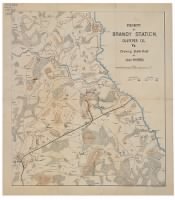| ||||||||||
|
skip to main |
skip to sidebar


Noah's Autobiography
Noah's Link List

Blog Archive
- July (8)
- May (1)
- April (1)
- March (2)
- February (1)
- January (1)
- December (2)
- November (1)
- October (2)
- September (3)
- August (1)
- July (1)
- June (1)
- May (2)
- April (1)
- March (1)
- February (1)
- January (2)
- December (1)
- November (1)
- October (2)
- September (2)
- July (2)
- June (1)
- May (2)
- April (2)
- March (2)
- February (3)
- January (1)
- December (2)
- November (1)
- October (1)
- September (3)
- August (2)
- July (2)
- June (2)
- May (2)
- April (3)
- March (2)
- February (3)
- January (3)
- December (3)
- November (3)
- October (2)
- September (4)
- August (3)
- July (4)
- June (1)
- May (4)
- April (4)
- March (7)
- February (5)
- January (6)
- December (3)
- November (4)
- October (5)
- September (3)
- August (5)
- July (1)
- June (3)
- May (2)
- April (5)
- March (3)
- February (2)
- January (1)
- December (5)
- November (2)
- October (2)
- September (3)
- August (4)
- July (3)
- June (5)
- May (1)
- April (5)
- March (4)
- February (4)
- January (5)
- December (3)
- November (5)
- October (7)
- September (6)
- August (6)
- July (8)
- June (3)
- May (5)
- April (3)
- March (5)
- February (6)
- January (9)
- December (4)
- November (2)
- October (6)
- September (7)
- August (5)
- July (8)
- June (9)
- May (7)
- April (8)
- March (5)
- February (7)
- January (6)
- December (2)
- November (4)
- October (7)
- September (6)
- August (4)
- July (9)
- June (3)
- May (7)
- April (13)
- March (8)
- February (8)
- January (7)
- December (4)
- November (4)
- October (3)
- September (8)
- August (2)
- July (6)
- June (4)
- May (4)
- April (6)
- March (8)
- February (7)
- January (6)
- December (9)
- November (4)
- October (2)
- September (6)
- August (8)
- July (12)
- June (5)
- May (10)
- April (9)
- March (8)
- February (10)
- January (2)
Liberty Bell

SemperFidelisNoah.com
Contact Noah at:
Noah@SemperFidelisNoah.com
Semper Fidelis means Always Faithful, and those words mean the world to Noah Belew. I offer my Web site to United States Marines (retired and active), their families and friends, and the ones who would like to be One of the Few, The Proud, The Marines, and just about anyone who enjoys a patriotic place to visit.
I invite readers to share their opinions and learn about World War II, the Korean War, and American first-hand history from the brave warriors who fought, served, and survived.
As a veteran of World War II, and the Korean War, who served under the command of legendary Marine Lewis B. 'Chesty' Puller, now lives in Gulf Breeze, Florida
(near Pensacola Beach) offers his views on news, politics, current events, the USMC, and even cooking, recipes, and dogs (Yorkshire terriers, in particular).
After leaving Southern California 20 years ago, where I lived and worked for over 40 years, to retire in the panhandle of Florida, I found it impossible to sit idly. So I began his third career writing weekly newspaper columns (mostly political) for over 18 years.
A self-proclaimed “country boy” born in Lawrence County, Lawrenceburg, Tennessee, I now share my views and Web site over the Internet, inviting readers
to "speak out" on his Web site's Opinion Page.
Please join Noah and his Yorkshire Terriers, Sir Winston Churchill V, and Baron von Dieter for a quick story or a lengthy study.

I Pledge Allegiance to the flag of the United States of America and to the Republic for which it stands, one Nation under God, indivisible, with liberty and justice for all.




